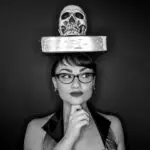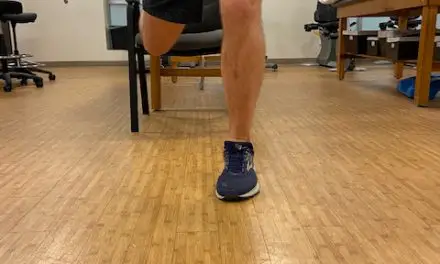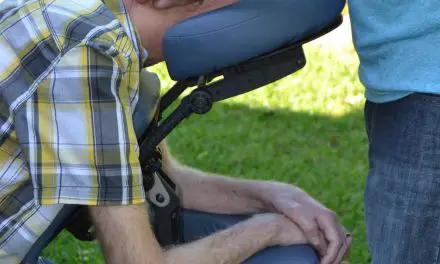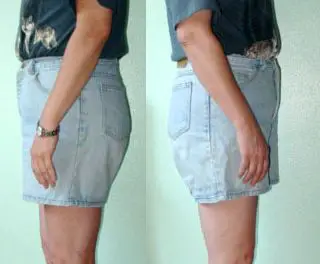Uterine fibroids are round growths that are made up of strong, connective tissues that form along the walls of the uterus, which may cause back pain when these growths push against nerves or the muscles of the back or hips. They can also cause pelvic pain that could be mistaken for other causes of such pain. These growths are benign since they don’t cause cancer nor do they represent an increase in the risk of cancer. But they’re capable of significantly lowering a person’s quality of life by causing chronic pain.
What causes uterine fibroids?
Uterine fibroids affect 3 out of 4 people with a uterus. With the pain this condition has the potential to come with, it’s not uncommon for those with a uterus to seek out known causes to minimize their risks. Unfortunately, uterine fibroids have no known cause but there are certain factors that can increase the odds of suffering from this condition. Known risk factors are:
- Family members with fibroids
- Increased exposure to estrogen
- Obesity
- Early period (first period before 10 years old.)
- Late menopause
- High blood pressure
- Pregnant early in life
- Those of African American heritage
Who is at risk for uterine fibroids?
Those who have an immediate family member, such as a parent, child, or sibling who is known to have fibroids, will be at greater risk. This can increase the risk for future generations, especially if you have any other risk factors that increase one’s odds.
Some of the increased risk factors can be genetic, such as early menstruation and late menopause. Generally, each family line will begin puberty at around the same time. If your mother began her period at 12 years old, then her mother most likely did as well, and her child will continue the pattern. It’s the same for menopause.
An increase in exposure to estrogen has been shown to increase the odds of getting uterine fibroids. However, birth control pills do not have negative effects of fibroids or the symptoms associated with fibroids. In fact, the use of contraception has been shown to decrease your likelihood of getting uterine fibroids.
High blood pressure and obesity could be the result of underlying genetic conditions, but they can just as easily be environmental. High blood pressure itself will not necessarily increase the odds of uterine fibroids, but certain hypertensive medication has been found to increase the risk by up to five times.
Just like blood pressure, obesity itself is not what can increase likelihood of fibroids, but rather by the effects that obesity has on the body, but these findings are still being studied.
African Americans are three times more likely to get uterine fibroids. But this is not due to ethnicity or race but rather environmental factors like stress, poverty and limited access to health care.
In more recent times, doctors have found that ethnic origins have led to certain differences in the basic functions of the body due to the natural mutations that occur in the body over an extended period of time and increase the body’s natural defenses to a specific area.
Another example of this is allergies. If you have grown up and lived in an environment all your life and then moved to a different one, your body won’t have the natural defenses, like antibodies, to protect them from allergens specific to that ecosystem.
Can uterine fibroids cause back pain?
Although uterine fibroids can cause back pain, it’s not as common as many think.
Oftentimes, smaller fibroids are asymptomatic and go unnoticed, but this will depend on their location. Small fibroids in the lining of the uterus won’t typically be the cause of back pain, but they can increase the pain of menstrual cramps as well as increase menstrual flow.
Larger fibroids, however, have a far greater impact on the body and are able to create larger and more noticeable side effects. For the most part there is less correlation of fibroids and back pain than one may expect, but it is possible. Back pain is found with larger fibroids that grow on the outside of the uterus and impinge on muscles and nerves.
Other symptoms of uterine fibroids
Uterine fibroids can cause many different symptoms, such as:
- constipation
- frequent urination
- lower pelvic pressure
- heavy menstrual bleeding
- menstrual periods that lasts for more than a week
- back pain and/or leg pain
For some people, constipation and frequent urination may be a minor inconvenience to those who aren’t suffering from uterine fibroids, but both have a huge impact on both the body and quality of life.
Many other symptoms of uterine fibroids are tied directly to their location and size. Since fibroids can attach anywhere in or around the uterus they can cause problems with fertility. Resolving fibroid issues prior to conception is recommended in order to aid conception and prevent the possibility of complications that may arise during pregnancy.
Because of where uterine fibroids are located, their presence can also make menstruation more painful, creating cramps that radiate both in the front and the back. This is not the same as having low back pain. Low back pain is often due to direct involvement with the musculoskeletal system and may or may not be accompanied by other pain.
Cramping which radiates to the low back is felt in both the lower abdomen and the low back. Cramping often has a different sensation of pain which is more akin to one’s organs being beaten by a meat tenderizer or going through a meat grinder, rather than stabbing, pressure, or dull pain which is common with muscular adhesions.
Uterine fibroids can also cause spotting and heavy menstrual bleeding. Although “heavy menstrual bleeding” is medically accurate terminology, it does not fully illustrate the bravery of this type of situation. For those who suffer from heavy periods, this can mean having to change sanitary products more often. But it can also mean losing more blood than the body can afford to lose.
Uterine fibroid treatments
There are many treatments that a doctor may consider for uterine fibroids, the most common of which is non-steroidal anti-inflammatories (NSAID), such as ibuprofen and naproxen, but they’re limited in reducing pain and not other side effects.
Selective progesterone receptor modulators (SPRMs) have been used for short term care and can decrease the volume of fibroids. SPRMs are pills that can be taken as emergency contraception after intercourse and primarily prevent pregnancy by delaying bodily functions, such as ovulation, but only if taken before ovulation can occur.
There aren’t many noninvasive treatments, but a recent study assessed the effects of acupuncture on uterine fibroids, which may lead to potentially long-term non-invasive treatments.
Surgery
There are currently three surgical options for the removal of uterine fibroids, which have all been shown to be highly effective. It’s important to talk to your doctor about which is the best for you.
- Myomectomy: this is the removal of fibroids that leaves the uterus intact. This type of surgery allows for treatment in those who want the option of future pregnancy.
- Uterine artery embolization: a procedure that shrinks fibroids by decreasing their blood supply. This method may be given as an option to those who still want to become pregnant.
- Hysterectomy: this is the complete removal of the uterus. This option would change many of the hormonal functions in your body as it takes out an organ that produces hormones critical to other bodily functions. But for some, it’s the best option available to them.
Hormone treatment
Hormone treatments are often used to treat uterine fibroids by way of hormonal birth control. Birth control comes in varied forms, such as pills, patches, and implants. There are currently several different types of birth control that can be implanted but not all are hormonal.
An intrauterine device (IUD) is the type of implant that is placed in the uterus vaginally. If you and your healthcare provider choose to go this route, this procedure can be very painful and not just the “discomfort” that many medical professionals reference.
Currently, the only other implant currently available is called Nexplanon and is implanted in the arm. This product slowly releases progesterone into the bloodstream through an implant placed in the inside of the upper arm.
Pills and patches are also an option for hormonal birth control and have a wide range of brands with some altering progesterone and others altering estrogen. Pills are less common now than they used to be since they must be taken at the same time everyday and skipping even one dose can be detrimental depending on treatment goals.
Birth control is not an option for everyone but for some this form of treatment will work. It can help reduce bleeding and pain but can take up to three months of treatment before symptoms of the fibroids are affected.
If you choose to go this route make sure you tell your doctor about all your menstrual symptoms, even those that seem commonplace, as well as telling your doctor if you struggle with anxiety or depression as these symptoms can become much worse.
Does massage work for uterine fibroids symptoms?
Massage is not recommended as a means to treat uterine fibroids of the associated symptoms, in fact fibroids can cause massage to be more painful. If you’re experiencing pain when laying on your stomach or back due to fibroids ask your therapist if you can be put in a side-lying position, which will take the pressure off the fibroid and allow for you to receive work.
Resources
If you are suffering from uterine fibroids and need to find a supportive community there are several organizations that can help. All of the following are non-profit organizations that are working to spread awareness through creating community and empowerment. You may also find your local support groups in person or on social media.

Lindsay Jones, LMT
Lindsay is a licensed massage therapist and a mother of three, who specializes in rehabilitation with emphasis on prenatal and postnatal care.
After graduating from the National Holistic Institute in San Jose, Calif., she went on to study how pain affects the body and how it can be alleviated during the constant changes of pregnancy and early motherhood.
In her free time, Lindsay has a deep love of all forms of art from storytelling and music to sewing and painting.





